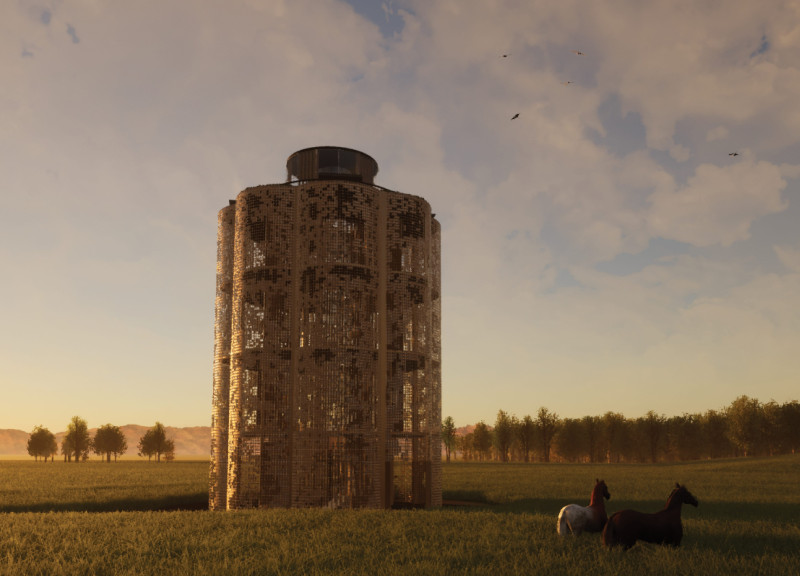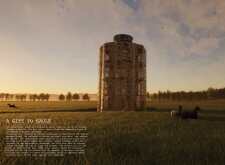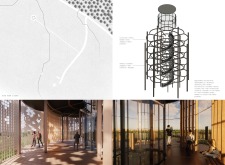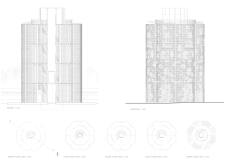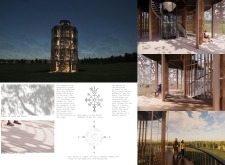5 key facts about this project
The observation tower on Kurgi Farm is located within the North Vidzeme Biosphere Reserve. It provides visitors with wide-ranging views of the surrounding landscape, which is recognized by UNESCO. This multi-story structure draws on Latvian mythology, especially the stories of Ūsiņš, the guardian of horses and bees, and Saule, the sun goddess. The design connects cultural history with respect for the environment, creating a relationship between the building and the natural world.
Architecture Concept
The building is designed to connect people with its surroundings. As visitors ascend, they can enjoy varying perspectives of the landscape. Rooted in local myths, the structure serves as more than just a viewpoint; it embodies the stories and connections that define the area.
Structural and Material Elements
The tower's main framework is made of steel, which supports its shape and gives it strength. Steel allows for a flexible design that can withstand the elements. The kinetic facade, made from aluminium, introduces movement to the tower. The panels shift with the wind, creating changing effects of light and shadow that enhance the visitor experience.
Interior Design Considerations
Inside, timber is used for the screens, providing a warm contrast to the metal exterior. These screens offer soft light, making the interior feel inviting. They are placed carefully to ensure views of the outside landscape remain prominent. This interaction between materials allows the inside and outside to feel connected, boosting the overall experience.
Sustainability Features
Solar panels placed on the top floor enable the tower to gather renewable energy, minimizing its environmental impact. This choice reinforces the commitment to sustainable practices, making the building more efficient. The design reflects a modern approach to energy use, blending functionality with ecological awareness.
The kinetic panels on the facade bring life to the structure, echoing the way sunlight filters through leaves in the surrounding forest. This playful quality adds depth to the experience, establishing a strong connection between the built environment and nature.


